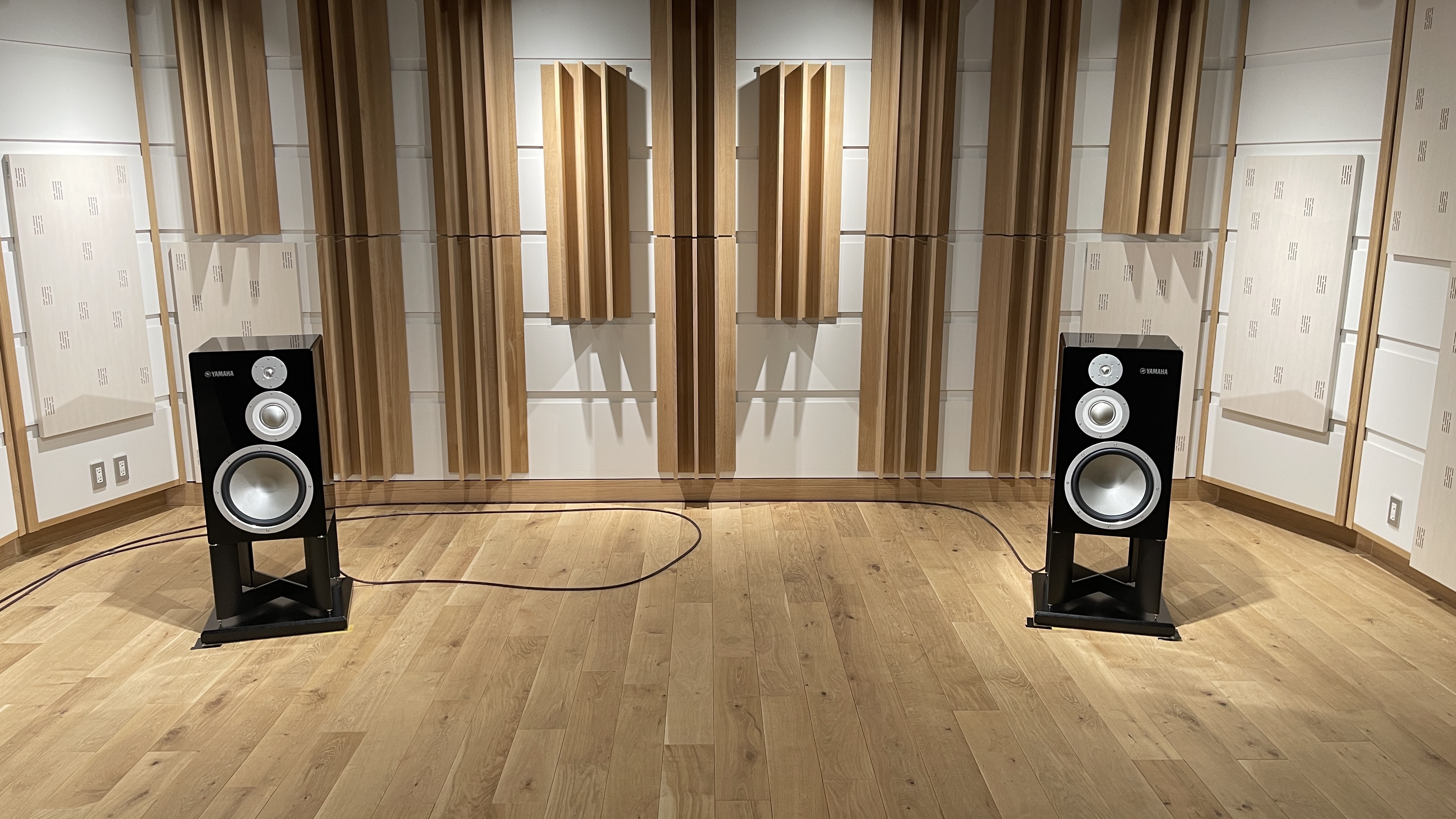Cambridge Audio Evo 150 vs Naim Uniti Atom: which is the best streaming system?
Two just-add-speakers systems that major on convenience and value go head-to-head
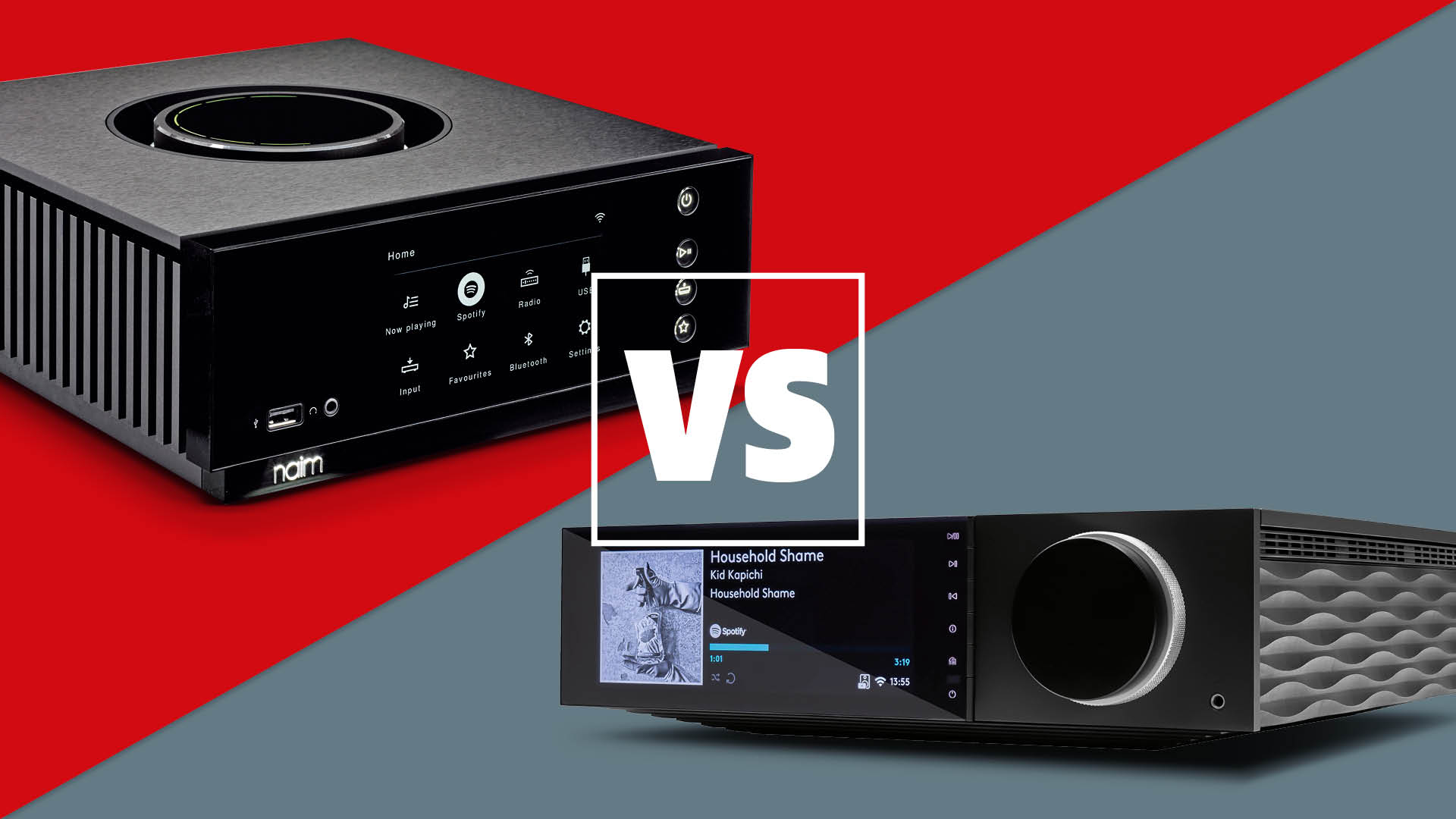
Whether you’re looking to simplify your hi-fi system or start one from scratch, a just-add-speakers streaming system makes a compelling case for forming its foundation.
We’re talking a single box that crams in network streaming and amplification, to which you just need to connect a network (via wi-fi or ethernet) and a pair of passive speakers. No need for several hi-fi separates, and the endless metres of trailing cables and tiers of rack space that sort of set-up requires. Indeed, these systems live and breathe on convenience and space efficiency – even if they don’t lend themselves very easily to upgrade paths and aren’t able to quite reach the sonic heights of the very best similarly priced pairings of stereo amplifier and music streamer separates.
A pair of leading lights in this streaming systems category are from two of the industry’s most reputable British electronics brands. The Naim Uniti Atom (£2399, $3290, AU$5000) has taken home What Hi-Fi? Awards consistently since its arrival in 2017, having helped establish the category alongside its pricier Uniti siblings and battled subsequent competition from the likes of Arcam and NAD.
Its closest competitor yet is also one of the newest on the scene, the Cambridge Audio Evo 150 (£2249, $3000, AU$4300). Part of a two-strong range that also comprises the more affordable Evo 75, the Evo 150 not only more or less price-matches the Naim but also takes the fight to its features list and sound performance. So, which one does what, and which is the best match for your beloved pair of stereo speakers?
- Read our Naim Uniti Atom review
- Read our Cambridge Audio Evo 150 review
Evo 150 vs Uniti Atom: features
Now, both the Naim and Cambridge fulfill their purpose as multifaceted, do-it-all machines – especially when it comes to streaming. Shared honours span Google Chromecast, AirPlay 2, aptX HD Bluetooth and Spotify Connect, while each has their own wireless, multi-room, app-controlled streaming platforms from which internet radio stations, music services such as Tidal and Qobuz, and NAS drives can be easily accessed.
The main disparity lies in the physical connections they house, and the Naim's offering is the scantier of the two, sticking with line-level RCA, USB, coaxial and optical (two) inputs, plus a HDMI ARC input. The Cambridge further builds on the Naim’s connectivity list with asynchronous USB and balanced XLR inputs, a built-in phono stage, and a second pair of speaker terminals that allows users to run two pairs simultaneously.
That makes the Cambridge easier to use in a laptop system and by owners of phono stage-less turntables. Arguably, it’s also the choice for Tidal HiFi subscribers, being the only one of the two supporting the MQA technology powering the catalogue’s hi-res Masters. It also supports Tidal Connect (a feature that allows you to ‘cast’ songs from within the native Tidal app), but at the time of writing this is a ‘coming soon’ update for the Naim.
Looking at this as a box-ticking exercise, the Cambridge wins hands-down and will make better sense for those who want to take advantage of the specific functionality it offers over the Naim. However, if you’re mostly into network streaming and only require a line-level or digital input or two to connect an external source, either is bound to satisfy.
**Winner: Cambridge Audio Evo 150**
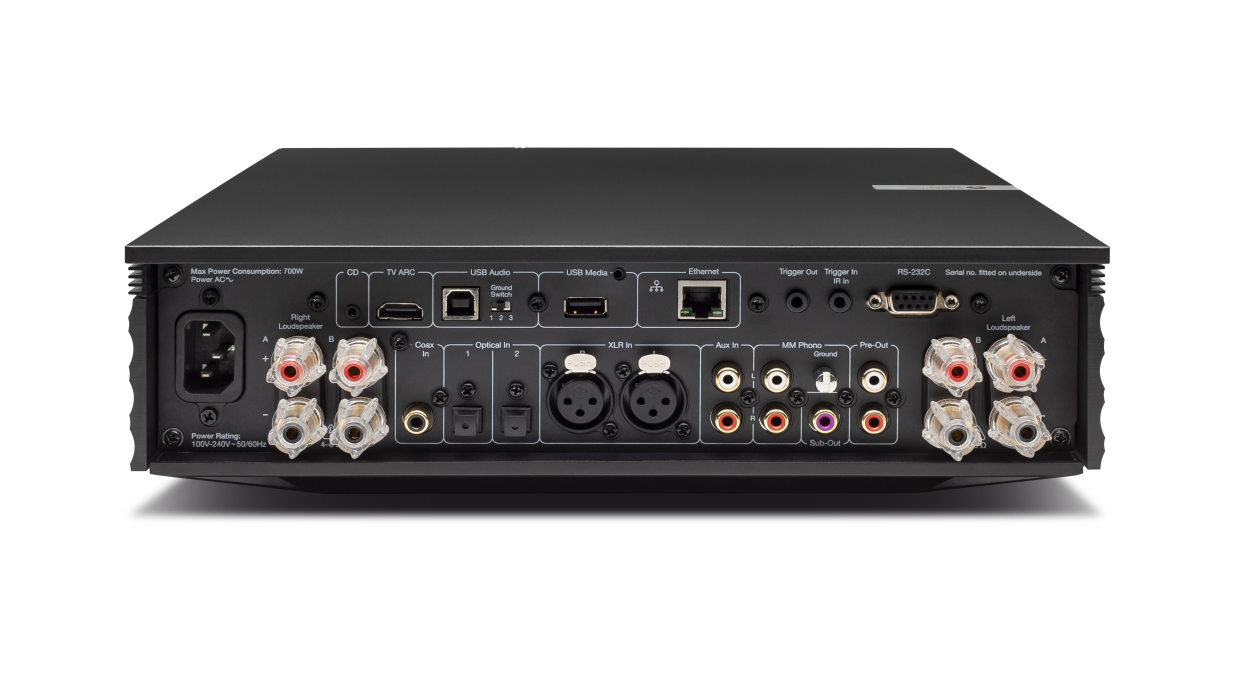
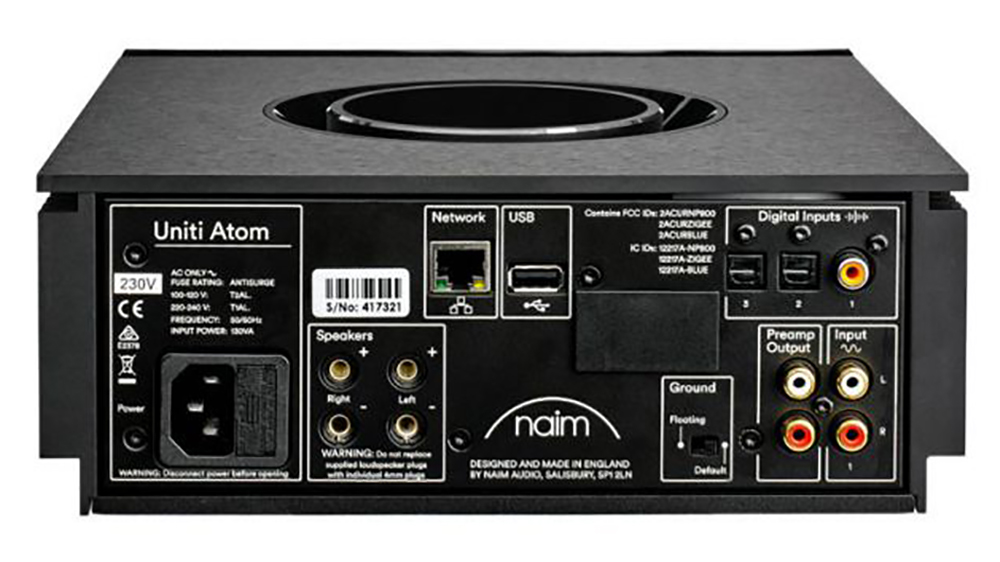
Evo 150 vs Uniti Atom: design
Inherently more of a ‘lifestyle’ product than traditional hi-fi separates, the Naim Uniti Atom and Cambridge Evo 150 adopt more contemporary aesthetics than the brands’ typical fare.
To that end, the Naim’s half-width, sleek black chassis is characterised by a full-colour LCD front panel and coffee-coaster-like volume dial on the roof. Both of these features, plus the fact that the Naim app is a software dream, makes this a handsome system that’s a pleasure to use. The flashy remote is a suitable complement to the Uniti Atom’s aesthetic, too: a handy tool for those occasions where you’d rather quickly change tracks and volume levels without having to pick up your phone or reach over to the Atom.
The Cambridge is of the same ilk and undoubtedly in many minds would, to repeat our review, run away with ‘best dressed’ in the category. It has a larger footprint than the Naim – 32cm wide and 35cm deep, compared to the Atom’s 25cm width and 26cm depth – but it too sports a nice big LCD display and tactile volume dial (here it’s on the front). The most striking design element, though, has to be the magnetically attached, interchangeable side panels, which come in walnut wooden (a nod to Cambridge's first product, the P40 amplifier released in 1968) and an attractively corrugated material made primarily from a recycled paper called Richlite.
The StreamMagic companion app is just as reliable and instructive to use as Naim’s, although we aren’t quite as sold on the Evo 150’s bundled physical remote, which has discreet but not particularly nice to use ‘strip’ buttons – and these are mirrored on the unit’s front panel.
**Winner: draw**
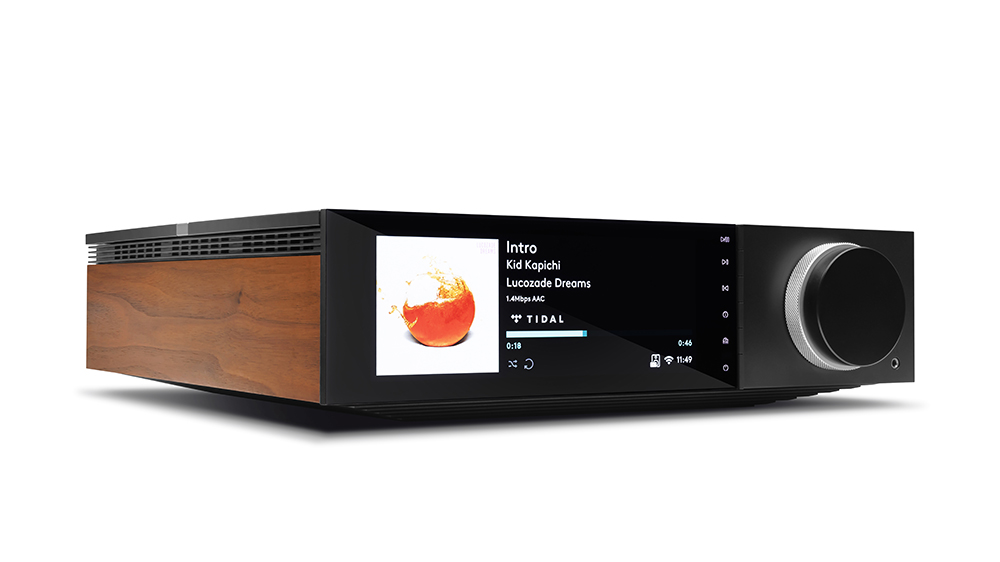
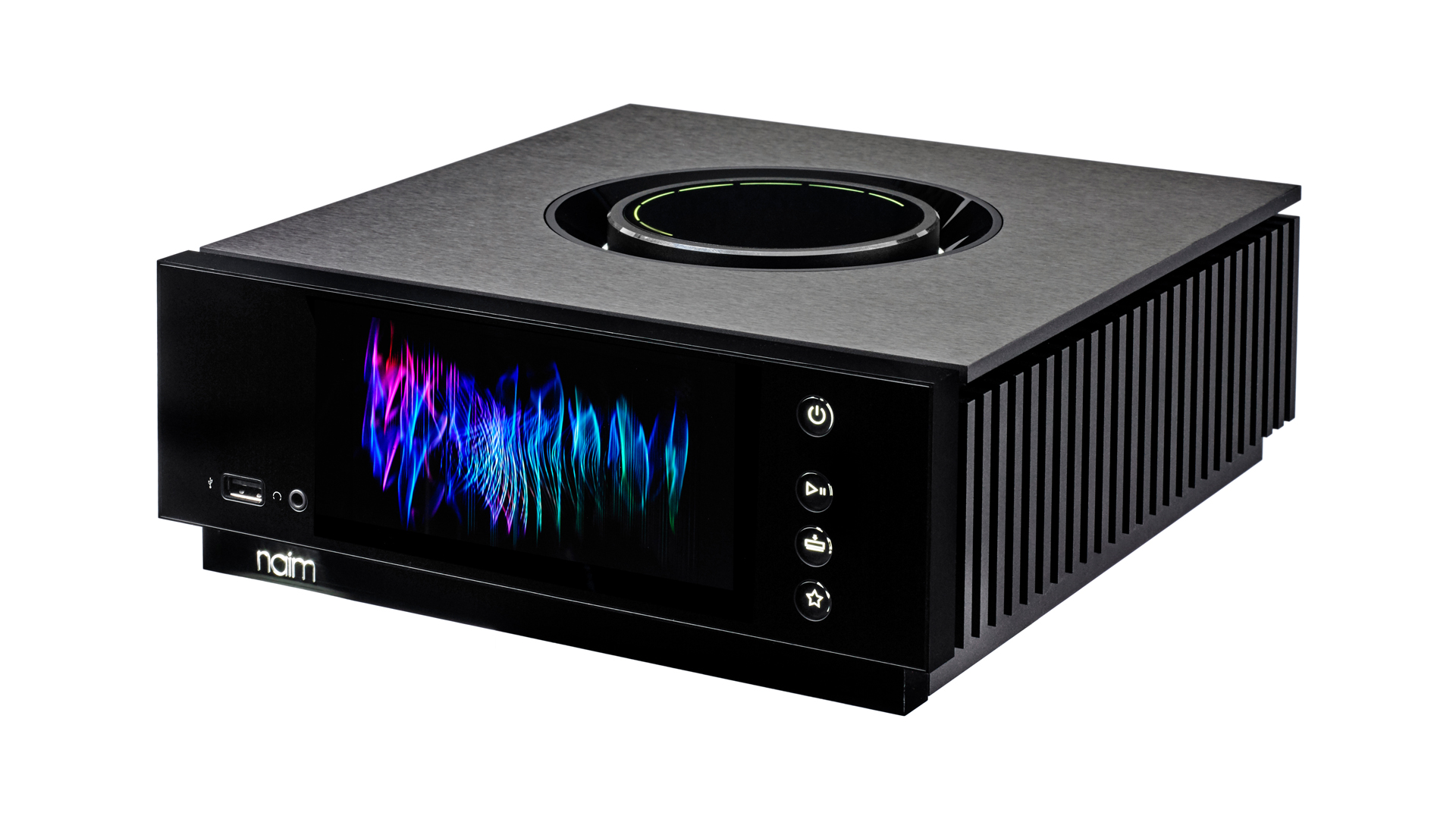
Evo 150 vs Uniti Atom: sound quality
When we first heard Cambridge’s Evo 75 – the more affordable sibling and our introduction into the Evo range – we had strong suspicions that the higher-spec’d Evo 150 could be a real challenger for the similarly priced, multi-Award-winning Naim. And those suspicions played out when we finally had the opportunity to put them head to head.
The five-star ratings that head up our reviews of both systems indicate their strengths in the sound department, but there is plenty of reading between the stars to be done here. The Cambridge and Naim each have their own distinct sonic flavours: the former is primarily open, eloquent and cultivated in its approach, while the latter takes a direct and less refined but more naturally musical stance. It’s actually a sonic contrast that reminds us of the one between the Marantz PM6007 and Rega io budget stereo amplifiers.
As with the Evo 75, but to a greater extent, the Evo 150’s scale and articulation was the first thing that struck us about its presentation, and we continued to be impressed by the detail levels that filled it, and the solidity and punch in which that was delivered. When we swapped speaker cables over from the Cambridge to the Naim, we instantly missed the Cambridge’s breadth, depth and polish.
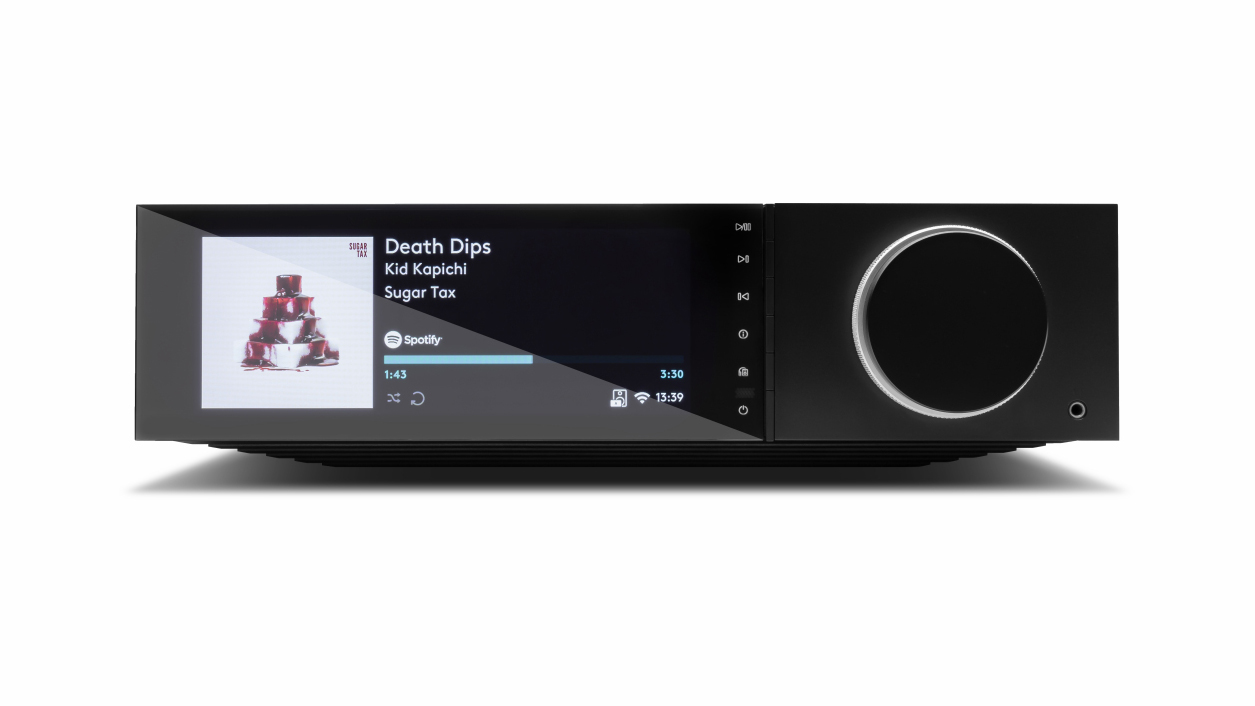
The Naim’s rhythmic prowess in terms of accomplished timing and dynamics have carried it through a series of head-to-heads in our test rooms in recent years, though – and this is where the Naim counters the Cambridge’s obvious talents. To quote our Evo 150 review, “Mac Miller's 2009 thrives on an enticingly cool, continuous drum/cymbal loop, and the interplay there is tighter through the Naim, which, as our listening progresses, proves more adept in capturing the rhythmic fabric of a song.
“While the Evo 150 offers a pleasantly wide window into his plainspoken rap, thanks to its midrange lucidity, the Naim is able to surface an extra layer of subtlety in his expression, too. Again, the Cambridge is more concerned with finesse, the string ensemble and piano melody delivered with a palatable fleshed-out smoothness.”
We believe one machine just comes out on top here, but for some, preference towards a sonic taste will have just as much a part to play in the choosing between these systems as feature wishlists will, as might the character of a current pair of speakers or component in an existing set-up. And while these head-to-heads are written to give an indication of how two products stack up against one another in terms of specs and performance, we’d always recommend going to your dealer and trialling them both yourself, if both systems sound like they will work for you.
**Winner: Naim Uniti Atom**
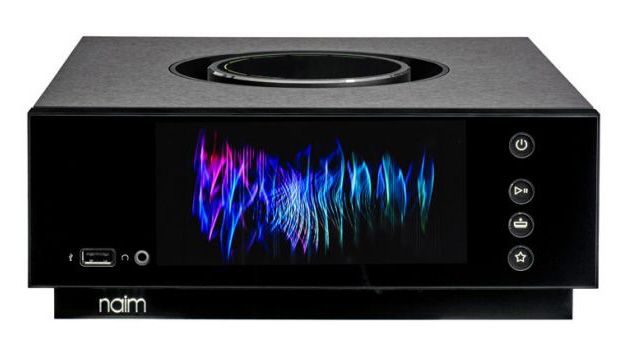
Evo 150 vs Uniti Atom: verdict
If you’ve got this far, it’s likely you’ve decided on whether or not a just-add-speakers streaming system is a path you want to go down. You may have even already decided which of these two you’re set on owning – and if that’s the case, congratulations, it will be a stellar buy. Remember, though, there are more affordable and pricier solutions if your budget is smaller or bigger than the asking price – as found within our best systems round-up.
Here, both Naim and Cambridge have used their existing banks of knowledge in stereo amplification and network streaming to create an appealing and convenient alternative to the traditional hi-fi set-up. Due to its slight sonic edge, the Naim is, in our opinion, the one to buy if you're starting from scratch and happy with its feature offering. But the Cambridge is also a superb option and its extra features will no doubt sway those looking for that extra flexibility.
Either way, thanks to their well-equipped feature set and proper hi-fi sound, this and a pair of speakers could be all the hi-fi some people will ever need.
MORE:
Want to expand your hi-fi system? Here's how to add a music streamer
Our pick of the best hi-fi systems 2021 you can buy
Get the What Hi-Fi? Newsletter
The latest hi-fi, home cinema and tech news, reviews, buying advice and deals, direct to your inbox.
What Hi-Fi?, founded in 1976, is the world's leading independent guide to buying and owning hi-fi and home entertainment products. Our comprehensive tests help you buy the very best for your money, with our advice sections giving you step-by-step information on how to get even more from your music and movies. Everything is tested by our dedicated team of in-house reviewers in our custom-built test rooms in London, Reading and Bath. Our coveted five-star rating and Awards are recognised all over the world as the ultimate seal of approval, so you can buy with absolute confidence.
-
Tinman1952 So the older and more expensive product with less connectivity options, no MQA, less width, depth and polish and less refinement and detail…..wins? Just because it’s Naim. Not biased at all…! 🙄Reply -
manicm ReplyTinman1952 said:So the older and more expensive product with less connectivity options, no MQA, less width, depth and polish and less refinement and detail…..wins? Just because it’s Naim. Not biased at all…! 🙄
To be fair, if you read carefully WHF admits it’s a matter of taste. From what they’ve described I would confidently happier with the Evo. -
Sliced Bread Yeah and MQA is becoming less relevant now more service providers are offering high res.Reply
It’s all subjective at the end of the day and I can see where WHF are coming from with their priorities. My Yamaha / b&w system sounds big bold and smooth, and it makes my friends old monitor audio / pioneer system sound quite crude in comparison, But…his system makes me what to boogie and mine can leave me feeling a little flat with up tempo music. -
Nintendologist I'd also like to see either/both of these systems compared to the new Roksan Attessa product. Oddly I can't find any mention of that anywhere on WHF.com?Reply -
djh1697 Naim will no doubt be able to service and repair there devices for many years, indeed they can still repair models almost 50 years old! I doubt that CA will offer that service.Reply

